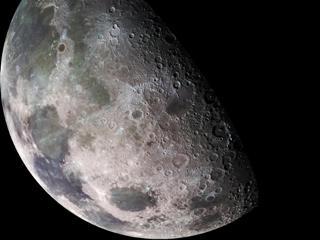
WASHINGTON (PTI): Based on valuable data collected by India's Chandrayan mission, a NASA-funded lunar research has yielded evidence of water locked in mineral grains on the surface of the moon from an unknown source deep beneath the surface.
The findings, published in the Nature Geoscience journal, represent the first detection of this form of water from lunar orbit.
Earlier studies had shown the existence of magmatic water in lunar samples returned during the Apollo programme.
In a statement, NASA said scientists using data from the Moon Mineralogy Mapper (M3) instrument aboard the Indian Space Research Organisation's Chandrayaan-1 spacecraft, remotely detected magmatic water, or water that originates from deep within the moon's interior, on the surface of the moon.
M3 imaged the lunar impact crater Bullialdus, which lies near the lunar equator.
"This rock, which normally resides deep beneath the surface, was excavated from the lunar depths by the impact that formed Bullialdus crater," said Rachel Klima, a planetary geologist at the Johns Hopkins University Applied Physics Laboratory (APL) in Laurel.
"Compared to its surroundings, we found that the central portion of this crater contains a significant amount of hydroxyl - a molecule consisting of one oxygen atom and one hydrogen atom -- which is evidence that the rocks in this crater contain water that originated beneath the lunar surface," Klima said.
In 2009, M3 provided the first mineralogical map of the lunar surface and discovered water molecules in the polar regions of the moon.
This water is thought to be a thin layer formed from solar wind hitting the moon's surface.
Bullialdus crater is in a region with an unfavourable environment for solar wind to produce significant amounts of water on the surface, NASA said.
"NASA missions like Lunar Prospector and the Lunar Crater Observation and Sensing Satellite and instruments like M3 have gathered crucial data that fundamentally changed our understanding of whether water exists on the surface of the moon," said S Pete Worden, centre director at NASA's Ames Research Center in Moffett Field, Calif.
The detection of internal water from orbit means scientists can begin to test some of the findings from sample studies in a broader context, including in regions that are far from where the Apollo sites are clustered on the near side of the moon.
For many years, researchers believed that the rocks from the moon were bone-dry and any water detected in the Apollo samples had to be contamination from Earth, NASA said.
"Now that we have detected water that is likely from the interior of the moon, we can start to compare this water with other characteristics of the lunar surface," said Klima.
"This internal magmatic water also provides clues about the moon's volcanic processes and internal composition, which helps us address questions about how the moon formed, and how magmatic processes changed as it cooled."
 Previous Article
Previous Article Next Article
Next Article












The Indian Air Force, in its flight trials evaluation report submitted before the Defence Ministry l..
view articleAn insight into the Medium Multi-Role Combat Aircraft competition...
view articleSky enthusiasts can now spot the International Space Station (ISS) commanded by Indian-American astr..
view article